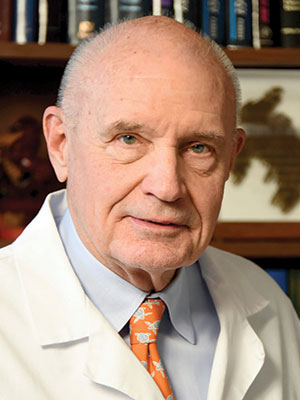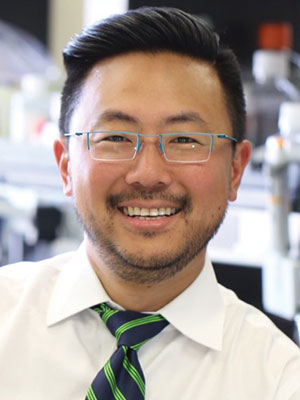
While complement testing has long been used to confirm and assess disease activity for patients with systemic lupus erythematosus (SLE) and other complement-mediated diseases, growing research suggests complement activation products may offer a more sensitive measure of complement activation and thus disease activity.
During a session on Sunday, three experts will examine the history of complement as a biomarker, review research on the next generation of complement testing, and discuss emerging complement-based therapies.
The session, Complement: Evolving Role In Rheumatic Disease, Diagnostics & Therapeutics, will take place from 9:00 – 10:00 am in Room B207-208, Building B at the Georgia World Congress Center.
Presenter John Atkinson, MD, the Samuel B. Grant Professor of Clinical Medicine at Washington University School of Medicine, St. Louis, will begin with a talk on the history of complement as a biomarker of rheumatic diseases.
“I will bring attendees up to date and summarize where we we’ve been and why we’re considering other types of biomarkers going forward,” Dr. Atkinson said. “Complement components C3 and C4 have been measured since the 1950s as biomarkers of disease activity. For the 50% of patients who have more severe lupus — DNA positive, renal disease, low complement, etc. — C3 and C4 have served to measure disease activity since 1953 or 1954.”
As part of his talk, he will share the initial papers from the 1950s and look at the history of complement use in rheumatology.
Dr. Atkinson, who has worked on complement research since the early 1970s, said that while new, potentially more sensitive markers are on the horizon, C3 and C4 continue to provide a reliable, informative, and accessible system to monitor disease severity.
“The most important things, of course, are how the kidneys are doing and how the skin is doing, but it’s nice to have laboratory tests to buttress that clinical impression,” he said. “That’s why most of us — even the younger clinicians — still use these.”
However, no test is perfect, so Dr. Atkinson will discuss some of the limitations that come up, such as copy number variation.
“Most of us have four C4 genes, but the rest of the population may have a different number of copies,” he said. “One of the most common questions I get comes from physicians with a patient that is doing well, but C4 hasn’t normalized. It’s still low. The answer is the patient likely has fewer copies of C4. There are some tests coming on the market now to do copy number variation, and at some point, we’ll all be sequenced, so you’ll know right away which patients have more or fewer C4 genes. We’re not there for everyone, yet, but in some cases, it’s very helpful.”

Alfred Kim, MD, PhD, Assistant Professor of Medicine at Washington University School of Medicine, will then pick up the discussion with his talk, “The Next Generation of Complement Testing: Complement Activation Products as Biomarkers of Autoimmune Disease.”
“As Dr. Atkinson points out, there are limitations to how well complement performs as a diagnostic marker or disease activity marker,” Dr. Kim said. “There have been recent advances looking at complement activation products to better assess complement activation. The emerging data strongly suggest these markers not only can better assess complement activation than measuring C3 and C4, but are now able to improve our diagnosis and disease activity assessment of autoimmune diseases.
“In addition, these markers are likely going to have important implications in determining which type of patients respond to emerging therapeutics that block complement activation.”
The research for complement activation products began decades ago, Dr. Kim said. However, early studies may have been confounded by how biologic samples were stored — giving researchers falsely elevated complement levels.
“In the past 10 years, there have been new efforts with cell-bound complement activation products, such as C4d,” he said. “This has been used for diagnosis in SLE. The data there is encouraging.
“Even more recently, several soluble complement activation products have also shown a strong association with SLE disease activity. These include soluble C4d and iC3b. Due to these encouraging data in lupus, investigators have expanded to other rheumatic diseases where complement activation has been noted to be important, such as antiphospholipid syndrome.”
Dr. Kim said attendees will come away with a better understanding of what markers are available to them now, including cell-bound C4d, and of the strengths and potential limitations of these tests.
“As with therapeutics, not every test will work for every patient,” he said.
The session will conclude with a lecture by V. Michael Holers, MD, an investigator at the University of Colorado, Denver, who will present “Emerging Complement-Based Therapies.” Dr. Holers will discuss new complement inhibitory therapeutics that have been developed or will be developed that will likely have important implications for autoimmune diseases as a whole.
“It’s not clear to us right now if every patient with a complement-mediated disease will respond to every therapeutic,” Dr. Kim said. “So one of the unresolved questions that Dr. Holers will discuss is whether or not we can better identify the type of complement activation that is occurring in a specific patient and whether or not that can help inform a health care provider about which type of complement therapy would be best used in that patient.”
